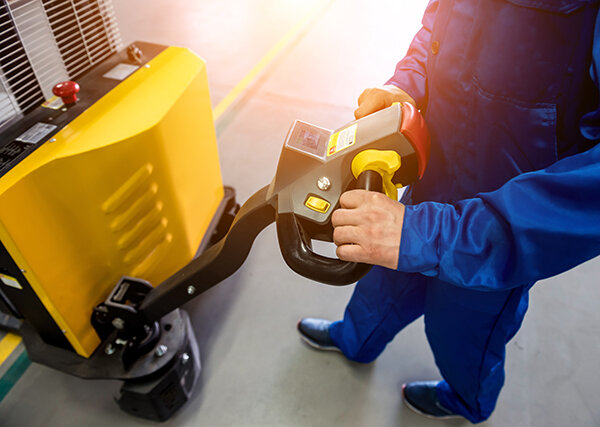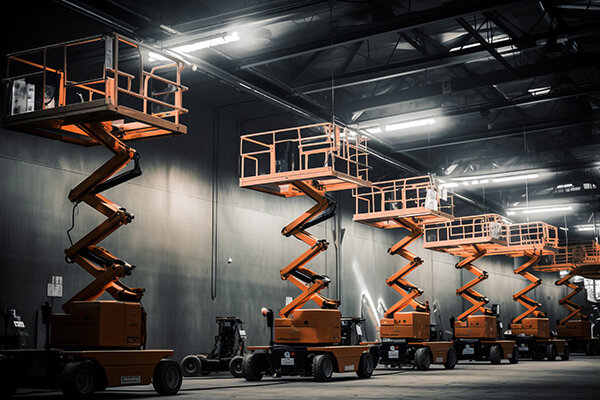The year 2023 witnessed a notable shift marked by the increased integration of advanced technologies. In this blog, we aim not only to briefly recap the year but also to delve into the reasons behind the surge in electrification in 2024—a trend that has significantly impacted various industries. As electrification undergoes further evolution, significant transformations in machinery are on the horizon, directly impacting daily life. This blog will examine key aspects, including stricter emission standards, the transition towards electrification, effects on traditional hydraulic equipment and the broader environmental implications associated with this transformative trend.
The impact of government mandates on fluid power systems
Future trends impacting hydraulics
One trend that will likely impact the future is the goal of reducing emissions in medium to heavy trucks and off-road equipment, which is a growing market in fluid power. The increase in demand, largely brought about by government regulations, is providing incentives for developing electrification in the small and large vehicle markets. Companies like Amazon, UPS and USPS have been implementing these regulations by delivering mail in an electric or hybrid delivery van.
Additionally, in 2020, California implemented the Advanced Clean Truck regulation. This mandates manufacturers to shift to electric zero-emission alternatives from diesel-powered vehicles starting in 2024. It also necessitates the discontinuation of sales of trucks emitting fossil fuels by 2036.
Furthermore, did you know some of the proposed regulations target the limited use of certain chemicals in lubricants? In fact, these directives encourage lubrication engineers to develop new formulas that include more synthetics and other biodegradable fluids that have imposed design changes to hydraulic equipment.
How does this affect traditional hydraulic equipment?
The electrification of hydraulic systems demands electro-hydraulics with high performance, high power, and high torque density to supply the required power for operating heavy equipment. However, is it a practical solution?
As regulations attempt to demand vehicle electrification in the off-highway vehicle market, there is no simple fix. Many hydraulic components must undergo significant changes to support electrified powertrains to match the power density provided by hydraulics in applications, such as large cranes, backhoes and front-end loaders.
Conversely, applications with adaptable duty cycles that involve low power demands will favor the utilization of electrified hydraulics. This is particularly evident in smaller equipment, such as Bobcats, forklifts, telehandlers and aerial work platforms. This is supported by a recent report outlining the future of mobile hydraulics, which suggests that electromechanical actuators in material handling equipment may replace hydraulic cylinders.
For these applications, the power density and costs to use electromechanical actuators instead of hydraulic cylinders are becoming increasingly easy. For example, JLG Inc has developed the Davinci AE1932 electric scissor lift with electromechanical linear actuators instead of hydraulic cylinders. Continuously, Volteq Equipment unveiled the Sky 1000 battery-powered mini track loader featuring a 20.48kWh lithium-ion battery, delivering a lifting capacity of 1,000 pounds. This innovation equips it with ample power to rival equivalent diesel-powered equipment.
Heavy equipment requires higher power density
Although electromechanical actuators are becoming popular in smaller material handling applications, hydraulic sales continue to grow rapidly due to the power density required for heavier equipment. This is evident as hydraulic sales in the material handling industry are expected to outpace agriculture by 2026. Therefore, even with advancements in electro-hydraulics, this market is anticipated to become the second largest in mobile hydraulics, just behind construction equipment.
Challenges in electrifying construction equipment
Navigating the challenges of electrifying construction equipment presents a critical question. As the largest sector for mobile hydraulics, the feasibility of new zero carbon regulations across the board are under scrutiny. Despite significant investments in battery technology by major construction equipment manufacturers, the proximity to achieving electrification in heavy equipment remains uncertain. The reality may not be as close or practical as initially perceived.
We all know someone who drives an electric or hybrid car, or perhaps we drive one ourselves. However, when we look behind the curtain, recent restrictions on the automotive industry are a close barometer of electric equipment in the construction market.
In 2023, the U.S. announced a restriction on automotive companies using lithium battery materials from countries considered “hostile to the U.S.” This includes companies controlled, owned or based in North Korea, Iran, Russia and China. However, China is one of the world’s leading producers of lithium and is anticipated to have a supply deficit by 2025 due to their internal demand for the material exceeding supply.
The Catch-22 dilemma emerges as an often overlooked reality in the fervor for electrification. The significant use of fossil fuels in mining lithium and manufacturing batteries raises environmental concerns, potentially outweighing the impact of drilling and refining oil and the carbon emissions from our cars. Additionally, the considerable cost of replacing a lithium-ion battery, whether in a car or a forklift, reaches tens of thousands of dollars. This prompts a crucial question: Have we truly reached the desired destination in our pursuit of sustainable technology?
Conclusion
Within the next few years, we will continue to see advancements in the electrification of heavy equipment. The question at hand is whether the practicalities of developing batteries for even the most lightweight applications, like material handling, will genuinely contribute to the betterment of the global environment.
Undoubtedly, heavy equipment hydraulics are here to stay. Those companies manufacturing components, such as hydraulic cylinders, fittings, valves and more, will continue to see significant growth. As the landscape evolves, players like Brennan Industries, contributing to the development and innovation of hydraulic solutions, play a key role in shaping the future of heavy equipment technology.
To learn more about the changing advancements in hydraulics, download our BluPrint on “How Are Smart Fluid Hydraulics & Smart Sensors Changing the Industry?”


